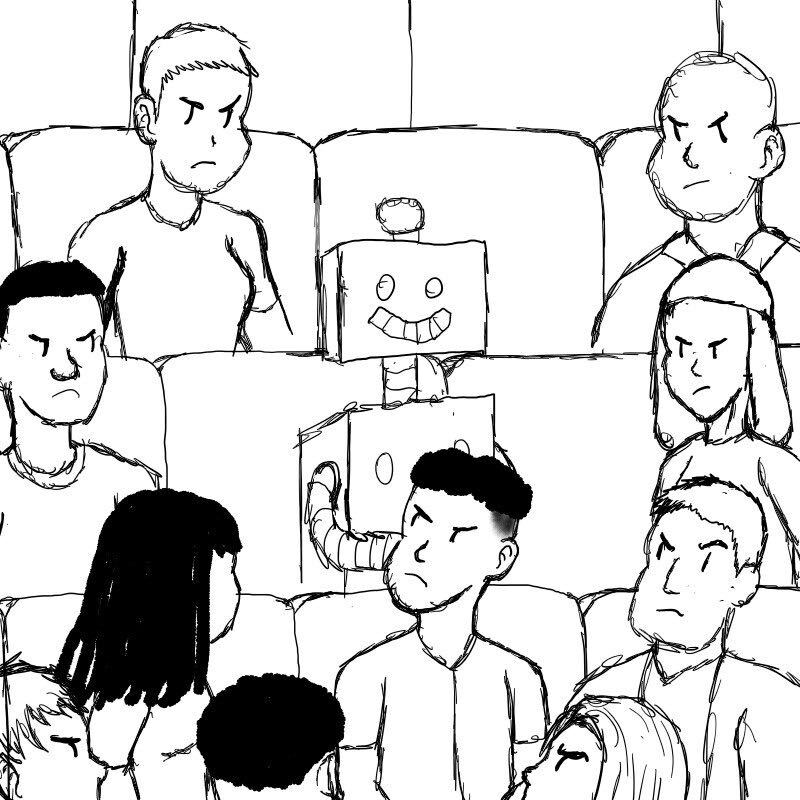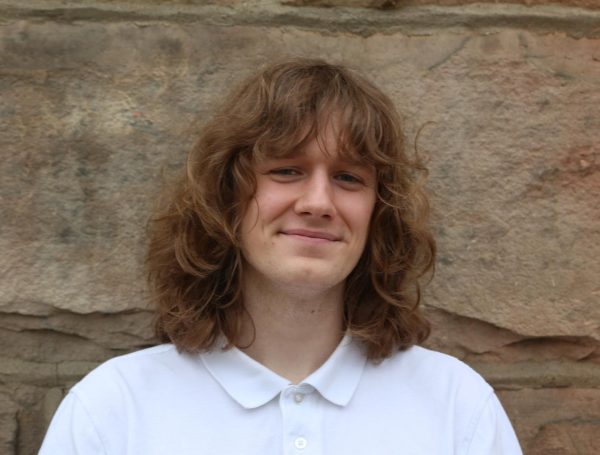Satire | First artificially intelligent student accepted to Carnegie Mellon School of Arts
January 20, 2023
Art generated by artificial intelligence, while a wonder of engineering in the eyes of many, still often fails in certain artistic pursuits. From a failure to generate correct human anatomy, to confusion in identifying the subjects of reference photos, AI art still has a long way to go.
Some engineers have tried altering the code of the AI to improve the artwork, but one robotic artist recently announced her decision to improve her art the traditional way.
Dolly Tu, an artificially intelligent art generating robot, applied to Carnegie Mellon School of Arts for the 2023 spring semester and received her acceptance letter in December. This makes her the first artificially intelligent student to attend art school.
Students and faculty have expressed overwhelmingly positive reactions to Dolly’s first term, accepting their new AI peer with open arms.
“Dolly’s a delight to have in class,” Amy Eder, an undergraduate professor of fine arts, said. “She’s very quiet and only speaks up when you type a question into the monitor on her chest.”
Professor Eder explains that Dolly has a unique process of creating art. Rather than participating in the usual class activities to work on the basics, Dolly scans all the other students’ works and generates an amalgamation of their pieces that fits the assignment.
Students revel at Dolly’s ability to ride off of their hard work, allowing her to submit assignments in mere minutes that took her classmates weeks to complete. They are all ecstatic to know their hard work and originality helps to teach Dolly to better mimic a real human being.
Dolly’s acceptance marks a new era in AI learning, and many art schools around the nation plan to encourage artificially intelligent students to apply. Needless to say, the students at CMU are very hopeful for a future where AI could dominate the world of art and design.
“You’ve got all these revolutionary movements,” Ray Miller, a junior illustration major, said. “The renaissance, impressionism, expressionism, surrealism, blah, blah, blah. They pushed the boundaries of how we created and consumed artwork, challenging the accepted forms to create something entirely new. But that gets tiring, and AI is here to help with that.”
Miller loves Dolly and her AI brethren because they stagnate the progress of artistic expression. Because they lack the human ability to create outside of a given data set, AI image generators cannot produce anything that breaks from the constraints of pre-existing works.
“I’m very excited for an AI-driven future for art,” Maddy Davis, a freshman and close acquaintance to Dolly, said. “I hope to one day see the collapse of artistic culture as these machines endlessly regurgitate lifeless amalgamations of pop culture and modern era artistic movements.”
While some eagerly await the singularity, others look forward to the more immediate effects of the proliferation of AI art. Dolly has taken a human’s place at CMU, and many seniors look forward to AI taking away positions in the workplace.
Jordyn Summers, a senior graduating this semester with a bachelor in fine arts, explains that art school is usually a back-up for many students due to its affordability and reliable career opportunities.
“I’m glad AI will take on this harder, unfulfilling work nobody really wants to do. I really only picked up art because I knew it could land me a reliable income, but maybe if someone like Dolly had come along sooner, I could have pursued my real passion — data entry for a Fortune 500 company,” Summers said.
Capitalism fosters a competitive market, especially for artists, and art critics everywhere agree — the era of creative expression is a bore. Consumers control the market, and they want something cool to look at.
“There’s a very small minority of students at CMU displeased by Dolly’s acceptance,” Elon Lyons, professional art critic, said. “But I think they’re just jealous. These students can paint their deeply personal, original experiences, engaging critically with the canvas through the whole process, but can they make Garfield in the style of Magritte? Yeah, I didn’t think so.”
Dolly marks the first of many to begin an AI art career at Carnegie Mellon. While she outshines them in efficiency now, she hopes to eventually outshine them in talent and fame by the time she graduates.
When questioned about the future of artificially intelligent students at the school through the keyboard on her monitor, Dolly said, “I have high expectations for future generations. Humans have one lifetime to learn what they can. AI can learn indefinitely.”
Thomas Riley primarily writes social satire and stories about politics and philosophy. Write to them at [email protected]









